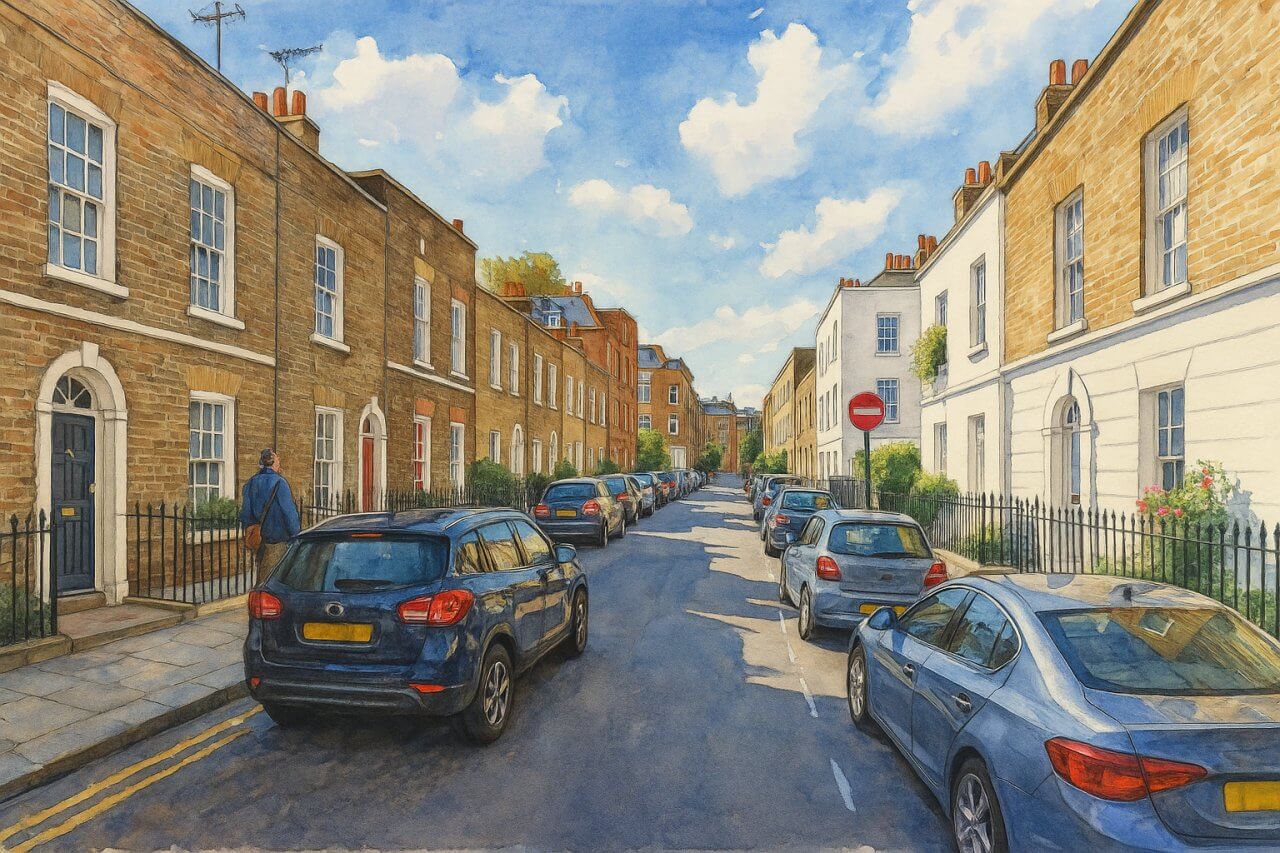
Bourne Street, London
Bourne Street is a short, elegant one-way street located in the prestigious Belgravia district of the City of Westminster, London. It connects Ebury Street in the southeast to Cliveden Place in the northwest, just a stone’s throw from the popular Sloane Square. Despite its central location, Bourne Street remains relatively quiet and residential, offering a window into Belgravia’s refined charm.
Orientation and Layout
Bourne Street runs approximately 150 metres (about 490 feet) in length, following a gentle curve as it ascends slightly from Ebury Street to Cliveden Place. It is a one-way street running northwest-bound, meaning vehicles can enter from Ebury Street and exit onto Cliveden Place but not the other way around. On-foot, however, visitors can traverse the street in either direction freely.
History and Naming
Bourne Street was developed in the mid-19th century, as part of the wider residential expansion of Belgravia under the auspices of the Grosvenor Estate. It was likely laid out between the 1840s and 1850s, during a boom in elegant townhouse development in the area. The name “Bourne” comes from the Old English word burna, meaning a stream or brook—although there is no direct evidence of a brook in the immediate vicinity. The name was possibly chosen to align with other pastoral-themed street names common in 19th-century developments.
Pronunciation: The word “Bourne” is pronounced like born /bɔːn/  in British English, not like “bournay” or “bown.”
in British English, not like “bournay” or “bown.”
Character and Atmosphere
Bourne Street offers a quintessential Belgravia streetscape: elegant period homes, clean pavements, and a quiet, dignified air. It is primarily residential, though it is also home to one of the most interesting and unusual churches in the area—Holy Trinity Church.
The street’s terraced houses are typically painted in white or pastel hues, many with original sash windows and wrought-iron railings. Some homes have been converted into flats or maisonettes, but the architecture remains largely intact and consistent with its Victorian origins.
Streets connected to Bourne Street
- Caroline Terrace
- Chester Row
- Cliveden Place
- Ebury Street
- Graham Terrace
- Skinner Place
- Whittaker Street
Local Sights and Landmarks
Holy Trinity Church, Sloane Street (Rear Entrance)
Although technically fronting Sloane Street, the rear entrance of the stunning Holy Trinity Church faces Bourne Street. This Grade I-listed Anglican church, built in 1890–1892 by architect John Dando Sedding, is a fine example of Arts and Crafts Gothic Revival design. It has often been dubbed the "Cathedral of the Arts and Crafts Movement."
Sloane Square and Nearby Attractions
Just a 3-minute walk from Bourne Street lies Sloane Square, a lively hub known for its cafes, boutiques, and the Royal Court Theatre. The nearby Saatchi Gallery and Duke of York Square offer cultural and shopping delights for visitors and residents alike.
Property and Real Estate
Bourne Street is considered highly desirable, like much of Belgravia. As of early 2025, typical two-bedroom flats here range from £1.5 million to £2.5 million, depending on size and condition. A standard two-bedroom flat on the street may span around 900–1,200 sq ft (84–111 sq m). Larger townhouses occasionally come onto the market, often commanding prices of £4 million and above.
Prices here are significantly higher than the London average, reflecting Belgravia’s enduring prestige, charm, and central location.
Public Transport Access
Nearest Underground Stations
- Sloane Square Station (District and Circle lines) — approximately 5 minutes on foot.
- Victoria Station (Victoria, District, and Circle lines, and National Rail) — about 10 minutes' walk southeast.
Nearby Bus Stops
- Cliveden Place / Sloane Square — served by routes 11, 19, 22, and 211.
- Ebury Street (towards Victoria) — served by routes 170 and C1.
This makes Bourne Street exceptionally well connected, despite its tucked-away, village-like feel.
Fun Fact
The stretch of Bourne Street that faces the rear of Holy Trinity Church is sometimes used as a quiet shortcut by locals heading between Ebury Street and Sloane Square. The church’s rear entrance on Bourne Street is also occasionally used for film and fashion shoots, taking advantage of the street’s picturesque qualities and the church’s dramatic Gothic rear façade.
Quick Facts
- Location: Belgravia, City of Westminster, London
- Length: Approx. 150 metres (490 feet)
- Traffic Direction: One-way northwest-bound (Ebury Street to Cliveden Place)
- Pronunciation: "Born" /bɔːn/
- Nearest Tube Stations: Sloane Square (5 min walk), Victoria (10 min walk)
- Nearby Bus Routes: 11, 19, 22, 170, 211, C1
- Notable Landmark: Holy Trinity Church (rear entrance)
- Real Estate (2025): £1.5m–£2.5m for flats (~900–1,200 sq ft / 84–111 sq m); townhouses £4m+
- Character: Residential, historic, quiet, and elegant
- Nearby Attractions: Sloane Square, Royal Court Theatre, Saatchi Gallery
Map of Bourne Street, London

Painting of Bourne Street, London (View image in full size)